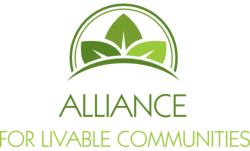
Anne Arundel
General Development Plan - Plan2040
The phrase “He who fails to plan is planning to fail” is attributed to Benjamin Franklin and has become an accepted bit of wisdom by governments and businesses.
Planning for how much and what type of development goes where and, just as important, where development does not go is the responsibility of Maryland’s local governments. State law establishes minimum requirements for what must be included in these plans. Land use, transportation and natural resources are among the required elements. Local governments are expected to update their plans every 10 years.
In Anne Arundel County, the plan that guides development and preservation decisions is called the General Development Plan (GDP). The current GDP, Plan2040, was adopted in 2021. There will also be 9 Regional Area Plans for different regions of the county and other related plans like the Odenton and Parole Town Center Plans, and the Green Infrastructure Plan.
The Anne Arundel County Alliance for Livable Communities is a coalition of dozens of county and state organizations representing tens of thousands of county residents. The Alliance is focused on ensuring that the new GDP:
-
Is created via a transparent process that offers meaningful opportunities for public engagement throughout.
-
Presents a path to an economically and environmentally sustainable future.
-
Fully integrates land use, transportation, environment and public facilities and services so development does not outpace our infrastructure at the expense of quality of life.
The GDP Process
The GDP process started with generation of 9 background reports assessing the prior GDP, our current density, land availability, infrastructure and environment.
Sixteen community visioning meetings were held to identify the kind of place the county can and should be in the future. These were supplemented by two online surveys. The visioning process is intended to guide the development of objectives and strategies for achieving the kind of future desired by county residents. The strategies could include changes to zoning, county ordinances, policies and programs. An implementation schedule that identifies responsible parties and timing is important and was included to ensure that the strategies are put in place and the plan’s vision is realized.
A 23-member Citizen Advisory Committee (CAC) was assembled with representatives from each of the earlier Small Area Planning areas and 5 at-large members. The CAC advised the Office of Planning and Zoning in the drafting of Plan2040.
Plan2040 is now. It will serve as a guide for nine Regional Area Plans that will provide recommendations on land use and zoning to the Council. Each Regional Area Plan will be followed by comprehensive rezoning for the Region. The Regional Plans will be carried out in groups of three with the first plans beginning in the May - June timeframe.
How Community Groups and Citizens Can Engage
You can make a difference by tracking and engaging in the Regional Planning process. Let your elected officials know your views, participate in public meetings and surveys, write letters to the newspapers and attend hearings.